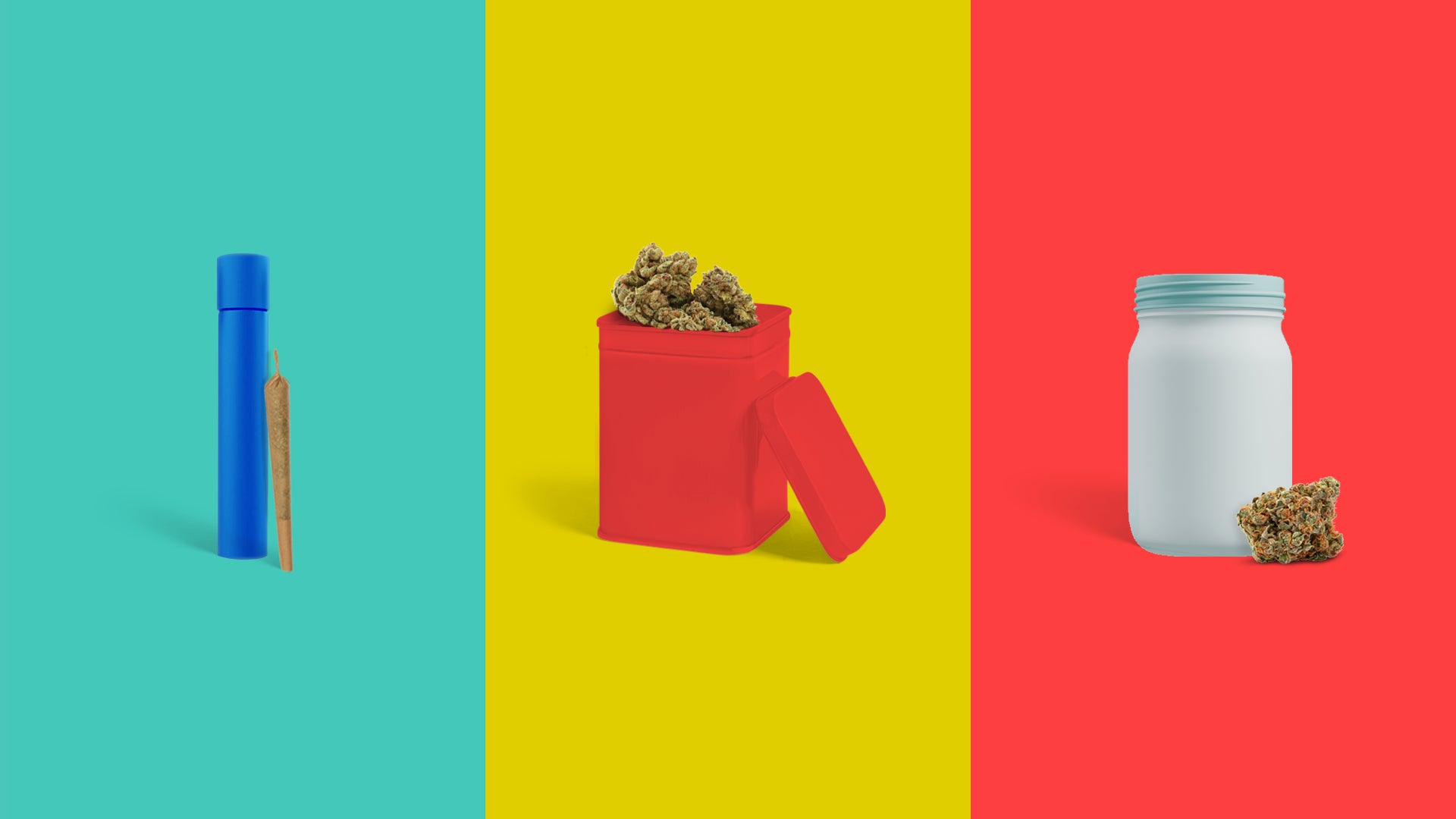Confused by the label on your favourite cannabis product?
No worries, we’ll clarify some things for you.
Strain Types
Cannabis is often classified into two distinct types: indica and sativa.
While differences between the two have been debated for centuries, to the average consumer, it’s really quite simple. Strains categorized as indicas are often believed to produce effects that are more drowsy in nature, while sativas are said to be energizing. Flowers with the “hybrid” classification are somewhere in the middle. However, there is no real scientific basis for these classifications.
You see, every cannabis plant features a unique combo of compounds and aromatic molecules that interact with each other to produce an effect. And the effect you experience is personal to you: your own body chemistry, mood, and physical setting influence your cannabis experience, regardless of the strain type.

THC:CBD
Legal cannabis packaging will always list the active compounds found in a given product, however, the two most common are THC and CBD.
THC stands for delta-9-tetrahydrocannabinol, and is the primary compound responsible for cannabis intoxication. In a nutshell: the higher the amount of THC in a product, the more potent the effects.
CBD is short for cannabidiol, a compound that is generally considered non-intoxicating. Studies suggest that it still has an effect on the brain, but is not believed to produce effects that are commonly associated with being “high”.
THC and CBD content are listed in different formats depending on the type of product you’ve purchased. Here are the different ways that you might find THC and CBD content listed on a cannabis product:
- Milligrams per gram or mg/unit (flower, softgels)
- Milligrams per gram or mg/g (oils)
- Milligrams or mg/unit (edibles)
When reading a packaging label, the numbers to look out for are those printed after “TOTAL THC” and “TOTAL CBD”. And remember, the higher the THC number, the more potent the product will be.

Packaging and Expiry Dates
The date that the cannabis product was packaged, and the date upon which it expires (if any), are both shown on the label.
Product Weight
The weight of a cannabis product is measured in grams and listed right on the label. In Canada, consumers are limited to purchases of 30 grams or less. However, if you were to place your cannabis on a scale, you may or may not notice some variations. This is because producers have been given a little bit of wiggle room in terms of product weight, and let’s face it: nothing’s perfect.
If the dried cannabis product is under two grams, then you may find that what you’ve actually purchased is a product with 10 percent more or less than the gram weight listed on the package. If the product weighs more than two grams, then you may notice a five percent difference.
So, when you buy 3.5 grams of dried flower, you may actually get anywhere from 3.325 to 3.675 grams.

Warning Labels
By law, cannabis products must contain warning labels similar to those required for tobacco products. These warning labels serve a public health purpose, and companies are required to print at least one warning on their cannabis packaging.
Warning labels are used to educate consumers on the potential negative effects of cannabis, and may also highlight other things such as consumers who are at a higher risk, like those who are pregnant or breastfeeding, adolescents, and children.
Producer Information
Canadian cannabis is grown by Licenced Producers that have received governmental accreditation and approval to cultivate, process and distribute cannabis. Should you need to contact the Licensed Producers, their contact details can be found on the label of the product.
Recommended Storage Conditions
Dried cannabis products should be kept in dry environments as heat and sunlight can actually degrade the active compounds in the plant, reducing the quality and potency of your product.
If you’re looking for a safe storage option, we suggest keeping your bud in an air-tight container.
If you have children, it’s best to store your cannabis well out of reach of any curious hands. So be sure to keep your cannabis with your other adult goodies, in a safe place away from prying eyes.
Lot Number
The lot number of a product is required on all Canadian consumer goods. It gives you specific information regarding the exact batch of cannabis that was harvested or extracted.
This is important because if there were ever any recalls of a product due to contamination, this lot number allows you, the producer, and public health officials to identify and sort out the problematic products.
The lot number also provides information regarding potency. Cannabis is harvested every eight to 12 weeks, and each harvest must be batch-tested and the content of CBD and THC is recorded. Every harvest is associated with a different lot number, and every harvest will produce slightly different potency testing results.



